Curbside Classic: 1986 Ford Tempo – A Deadly Sin?

From the blooming tree in the photo, it’s obvious that I didn’t just shoot this Tempo recently. But then it wasn’t just this past spring either; it was a year and a half ago. Why have I been temporizing? Few cars leave me feeling more conflicted than the Tempo: is it a Deadly Sin or a Greatest Hit? But I find myself in a temporary state of equanimity today, so let’s see if we can’t put the Tempo into proper perspective. Tempus fugit; it’s now or never.
As lowly as it may seem today, the Tempo played a very significant role in the salvation of Ford in the early-mid eighties. That crisis, not dissimilar to Ford’s recent one, also involved pulling Ford back from the brink of bankruptcy. Donald E. Petersen was Ford’s Allan Mulally of the time, and his task was formidable ( see related article here). Ford’s product line going into the eighties was bloated and boxy, and almost took the Blue Oval down. A radical change was called for, and Petersen delivered, in a critical one-two-three punch, despite having limited resources.
Petersen placed his bet on aerodynamics, or at least the image of it. To get a clearer perspective of that, compare Ford’s Ghia Navarre Concept of 1980 (top) and the Ford Probe III concept of 1981 (below). What a difference a year and a fresh new direction can make. And the styling influence of the Probe on the Tempo is all-too obvious.
Strictly speaking, the Probe III more directly predicted Ford’s European Sierra, which arrived in 1983, one year ahead of the Tempo. It was shepherded in part by Bob Lutz, and replaced the boxy Cortina and Taunus. Built on a totally different RWD platform, the Sierra was initially challenged in winning over the generally conservative buyers of European mid-size Fords. And of course, the Sierra was the basis for the Merkur XR4Ti, one of Lutz’ less successful ideas.
Back to the USA: in 1983, the reskinned T-Bird arrived, the first of that succession of aero-punches. It was welcomed with open arms, including yours truly. The Tempo followed one year later, and the final killer blow (to GM, mainly) was the Taurus in 1986. The Tempo played a crucial role in paving the way for the Taurus, and getting folks increasingly used to the jelly bean look. The strategy worked, particularly so in California, where the shift away from GM cars was seismic, and a predictor of things to come. In that trend-setting state, Ford was suddenly cool, the last of the Big Three to enjoy that status there for a long time, if ever.
The Tempo’s first year (1984) was also its best ever, with sales exceeding 400k. The secret to its success: a fresh look, attractive pricing, and GM’s X-Body cars. With stickers starting at about $7k ($14k adjusted), the Tempo cost about the same as a Honda Civic four door, if you could get one then without a dealer mark-up. But the Tempo was roomier, offering interior dimensions closer to the Accord, which cost considerably more.
By 1984, GM’s X-Bodies, mainly in the form of the Chevy Citation, had imploded due to a number of recall and quality issues. The timing of the Tempo was perfect. Although sales drooped a bit after the first year, the Tempo was a strong seller for most of its ten-year (overly) long life, except for the last few years, by which time it was sorely long on tooth. By then, the Japanese competition had left it in the dust. But the Tempo did what Ford needed it to do, at a minimum. The question is how well did it go about doing it?
That’s the shadow side of the Tempo, and its almost identical Mercury Topaz twin. Let’s first look at how the Tempo was developed to get a better picture of its strengths and weaknesses. The Tempo was hardly a clean-sheet new car; the same applied to the T-Bird. While Peteren was betting the whole Ford farm on the all-new Taurus; he could only afford to bet the outhouse on the Tempo.
The Tempo was designed to replace the boxy, foxy Fairmont. But with FWD mania sweeping the land, the Tempo was built on an elongated gen1 Escort platform, stretched to the rear and pushed out at the sides a bit, but essentially identical from the cowl forward. That included the Escort’s front and rear MacPherson strut suspension, which seemed to promise more on paper than it delivered, at least in the US. The differences between the European and US Escort was most painfully felt in the suspension tuning, and the flaccid and imprecise manners of the early US Escort found its way into the Tempo. Ford’s Focus on excellent handling was still a ways off.
Ford wisely abandoned early notions of using the Escort’s weak-chested 1.6 L engine in the Tempo. Needing something a bit larger,they chose not to use their existing 2.3 L OHC four as used in a number of Ford’s other cars. Why? Undoubtedly, it was an expedient decision based on available resources. The 2.3 Lima four facility was probably running at or near capacity, meanwhile the transfer lines for the old Falcon six were going begging.
So instead of developing a nice modern and smooth new engine like the Hondas enjoyed, the Tempo’s four was basically a Falcon 200 CID OHV six with two of the cylinders lopped off, crowned with a new cylinder head. Dubbed the HSC, for “high swirl combustion”, it was a rather modest affair compared to the competition (except GM’s Iron Duke), and suffered from nasty NVH (noise, vibration, harshness), lacking any sort of balance shaft. Expedient yes; but not anything to be proud of by any stretch.
That included its power output, which went up and down over the years, randomly: it started with 90 hp in ’84 and ended with 98 hp, with way stations of 86 and 95 hp along the way. Thankfully, the carburetor only had to be suffered for the first year; a succession of ever-better fuel injection systems followed. But Ford’s advanced ECC-IV electronic engine computer was there from the get-go, even if there wasn’t much get-up and go.
If you were searching for that, there was a tempting-sounding HSO (high specific output) version on the option list some of those years. But with all of (don’t laugh) 100 hp, it was an oxymoron. Oh well. The Taurus’ Vulcan 3.0 L V6 with 130 hp finally became available in 1992, and put the misnamed HSO out to pasture.
Lest I forget, the Tempo was available with four wheel drive, starting in 1987, as a response to the growing popularity of the Subaru and Audi quattro. It was at the height of four-wheel drive passenger cars fad, a precursor to larger things to come. The driven rear wheels probably endeared the Tempo to some snow-belt customers, but it was not a big success, and disappeared after some years. That also applies to the Mazda-sourced 2.0 L diesel engine, that made all of 52 hp, but had a whopping 41/56 (old formula) EPA sticker. Ever see one; or should I say hear one?
So how did all of that development history come together behind the wheel? Before that though, let me say I was a bit smitten by the Tempo’s leading-edge looks when it first appeared, but my expectations were modest, based on experience with an Escort or two, my Turbo Coupe, and reading about the engine’s origins. A sleek new suit does not always make the car.
Stephanie and I took a kid-less vacation to explore New Mexico for a week, in the spring of 1984, and we were treated to a new Tempo sedan as our rental. My idea of exploration is not just the typical tourist stops, but the back roads and non-roads. We thrashed it all over the state, including trails normally associated with four wheel drive vehicles. The verdict: a travel companion that talked too much, tripped too often, and wouldn’t keep up the desired pace. The noisy, overworked four droned and thrummed perpetually. Handling was imprecise and flaccid. The suspension’s longish travel was a help, but better damping was sorely missed as the Tempo bounced along.
The best thing I can say is that the Tempo is that survived all the abuse I threw at it. Good thing I only dented instead of tearing off the oil sump on one particular rock. It would have been awkward to explain to the rental company what I was doing just there. Stephanie’s driver at home was a Honda Civic at the time, and let’s just say the Tempo was no Honda. Even less so in its latter days, when the Japanese competition had evolved several generations further.
The Tempo’s initial interior styling (picture is from an ’87, I think) wasn’t anywhere near as adventuresome and leading edge as the exterior might suggest. Ours was a horrific shade of red, and rather tacky. This was rectified somewhat in later years, but it appears that Ford’s interior stylists still had more of their feet in the late seventies than mid eighties.
The Tempo may have started out as a leading-edge trend-setter, but lived out its long life as a car your Mom or Grandma would drive. And its long life span probably also enhanced its reliability. Like much of Detroit’s cars, they tended to take a few years before they worked their kinks out. My memory tells me the Tempo never had any really blatant quality issues, but on the other hand, the early ones seem to all have disappeared.
The Tempo: a band-aid that got Ford through a painful transition and served some folks well enough, but probably nobody complained when it was finally removed. A Deadly Sin? After reading the comments, definitely yes.

More by Paul Niedermeyer
Latest Car Reviews
Read moreLatest Product Reviews
Read moreRecent Comments
- Tassos Jong-iL Here in North Korea we are lucky to have any tires.
- Drnoose Tim, perhaps you should prepare for a conversation like that BEFORE you go on. The reality is, range and charging is everything, and you know that. Better luck next time!
- Buickman burn that oil!
- Jkross22 Meant to ask.... what's the best oil to use in a popcorn popper? I've been wanting to try peanut oil, but can't find anything smaller than the huge container at smart n final.
- Ajla A union fight? How retro 😎



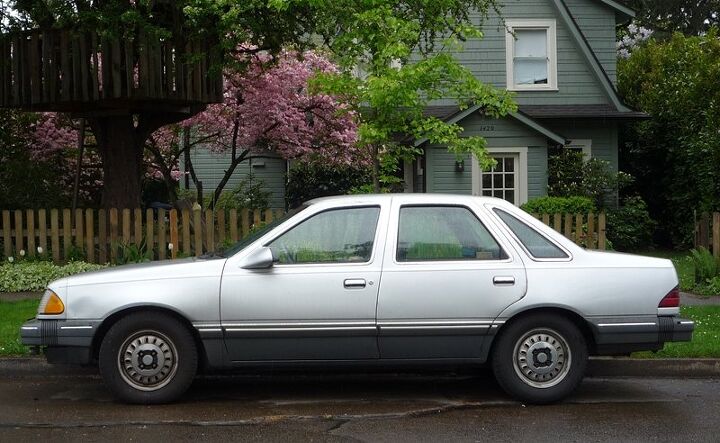























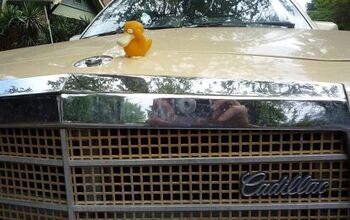
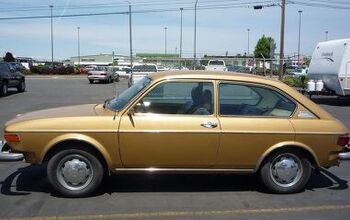

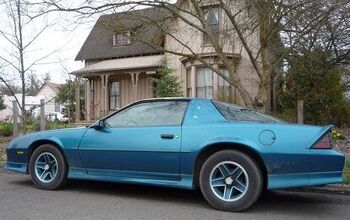
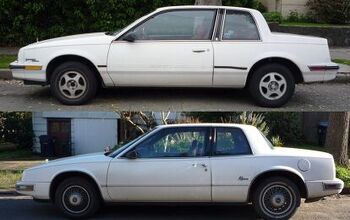











Comments
Join the conversation
My parents bought a 1986 Diesel Tempo 5spd new back in the day. Fuel economy was excellent and it idled along at 80mph on the Intetstate.Ford discontinued the diesel engine in the Tempo at the end of 1986 but the Escort carried it over into the beginning of 1987. I wish I could buy a vehicle in the US that used the Maxda 2.0L diesel after Ford discontinued it.
My folks bought a 1989 Tempo when it had just 5,000 miles on it. After a couple of years it needed a major repair while they had it on a vacation trip. It was a lousy car. Interior styling was horrible and the instrumentation was boring Horsepower was weak enough for a snail to catch up to it before it went from 0-60